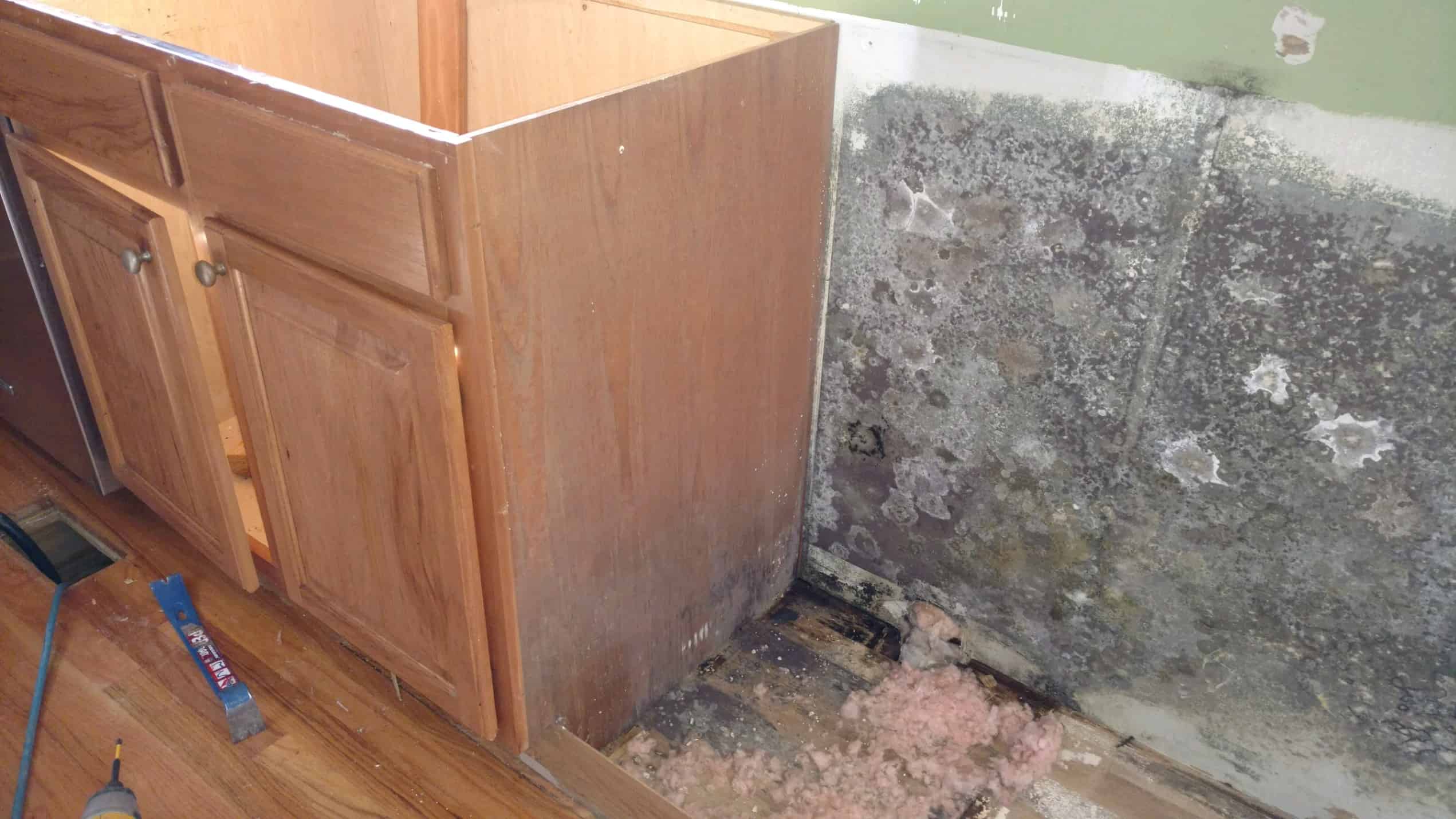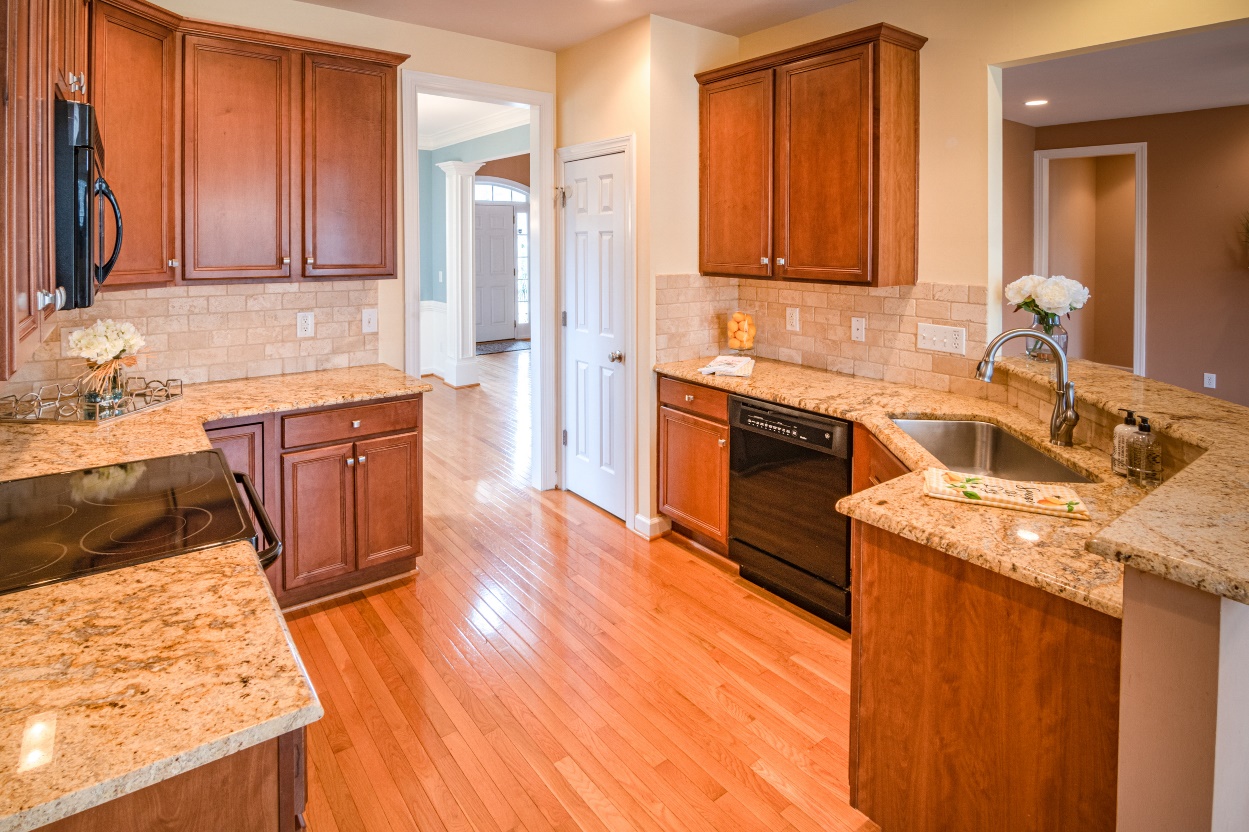Identifying the Source of Water Damage: Water Damage Behind Kitchen Cabinets

Water damage behind kitchen cabinets can be a significant problem, leading to structural issues, mold growth, and unpleasant odors. Identifying the source of the leak is crucial for addressing the problem effectively and preventing further damage.
Common Causes of Water Damage
Understanding the common causes of water damage behind kitchen cabinets is essential for a targeted inspection. The most frequent culprits include:
- Leaky Pipes: Old or corroded pipes can develop leaks, especially under sinks, dishwashers, and refrigerators. These leaks can go unnoticed for a while, leading to water damage behind cabinets.
- Faulty Plumbing Fixtures: Leaky faucets, showerheads, or even a dripping garbage disposal can contribute to water damage over time.
- Appliance Malfunctions: Refrigerator leaks, dishwasher malfunctions, or even a leaking ice maker can lead to water accumulating behind cabinets.
- Roof Leaks: In some cases, water damage behind kitchen cabinets can be traced back to a leaking roof, particularly if the cabinets are near an exterior wall.
Visual Inspection for Signs of Water Damage
A thorough visual inspection can help identify potential water damage behind kitchen cabinets. Look for the following signs:
- Discoloration: Water damage often leads to discoloration on walls, ceilings, or cabinets. The discoloration can be a darker shade of the original color or a yellowish or brownish stain.
- Mold Growth: Mold thrives in damp environments, and its presence is a clear indication of water damage. Look for black, green, or white spots or patches on surfaces.
- Warping: Water can cause wood to warp or buckle, especially in cabinets or floorboards.
- Peeling Paint: Water damage can cause paint to peel or blister, indicating a moisture problem.
Pinpointing the Source of the Leak
Once you have identified signs of water damage, the next step is to pinpoint the exact source of the leak. Here are some methods:
- Tracing the Path of Water: Follow the path of water stains or discoloration to determine where the water is coming from.
- Using a Moisture Meter: A moisture meter can help detect hidden moisture behind cabinets or walls, allowing you to pinpoint the exact location of the leak.
- Consulting with a Plumber: If you are unable to identify the source of the leak, it is best to consult with a qualified plumber. They have the expertise to diagnose the problem and recommend the appropriate solution.
Assessing the Extent of Damage

Understanding the severity of water damage is crucial for determining the necessary repairs and ensuring a safe and healthy living environment. Water damage can range from minor, easily addressed issues to severe, requiring extensive repairs and potentially posing health risks.
Classifying Water Damage Levels
The extent of water damage is typically categorized into three levels: minor, moderate, and severe. Each level signifies a different degree of impact on materials and structures, requiring varying repair approaches.
- Minor water damage usually involves surface-level moisture affecting materials like drywall, flooring, or cabinetry. The damage is often localized, and the affected areas can be dried quickly, minimizing the risk of mold growth. This level of damage is typically addressed with straightforward repairs, such as replacing damaged drywall or flooring.
- Moderate water damage involves deeper moisture penetration, affecting structural components like subfloors or framing. The damage may extend beyond the initial source, requiring more extensive drying and repairs. Mold growth is a potential concern, requiring professional inspection and remediation. This level of damage may involve replacing affected materials and addressing structural issues.
- Severe water damage is characterized by significant moisture penetration, affecting multiple layers of materials and structural components. The damage may involve extensive water damage to walls, ceilings, floors, and even the foundation. Mold growth is highly likely, requiring extensive remediation. This level of damage often necessitates significant repairs, potentially including structural reinforcement, demolition, and reconstruction.
Factors Affecting Damage Assessment
Several factors contribute to assessing the extent of water damage, providing a comprehensive understanding of the situation.
- Affected Materials: Different materials react differently to water exposure. For example, porous materials like wood and drywall absorb water quickly, leading to swelling, warping, and potential mold growth. Non-porous materials like tile or concrete may be less susceptible to damage but can still be affected by prolonged exposure to moisture.
- Duration of the Leak: The length of time water has been present significantly influences the extent of damage. A short-term leak may cause minor surface damage, while a prolonged leak can lead to deeper penetration and more severe damage.
- Presence of Mold: Mold growth is a significant indicator of water damage, particularly in hidden areas. Mold can quickly spread and cause health problems, making it crucial to identify and address any signs of mold growth.
Professional Inspection for Comprehensive Assessment
While a visual inspection can provide an initial assessment, a professional inspection is essential for a comprehensive understanding of the extent of damage. A qualified inspector can assess the hidden areas, identify potential structural issues, and determine the presence and severity of mold growth. This comprehensive evaluation is crucial for developing a proper repair plan and addressing any potential health risks.
Remediation and Repair Strategies

After identifying the source of the leak and assessing the extent of damage, the next step is to address the water damage. This involves drying and cleaning the affected area, repairing the damaged cabinets, and addressing the underlying cause of the leak.
Drying and Cleaning the Affected Area
Drying and cleaning the affected area is crucial to prevent mold growth and other health hazards. This process involves several steps:
- Remove Damaged Materials: Begin by removing any water-damaged materials, such as drywall, flooring, and cabinet components. This step helps to prevent further damage and allows for proper drying and cleaning.
- Dehumidify the Space: Use a dehumidifier to remove moisture from the air and accelerate the drying process. This step is essential for preventing mold growth and restoring a healthy indoor environment.
- Clean and Disinfect: Thoroughly clean the affected area using a disinfectant solution. This helps to eliminate bacteria, mold spores, and other contaminants that may have been introduced by the water damage.
Repairing Water-Damaged Cabinets, Water damage behind kitchen cabinets
Repairing water-damaged cabinets requires a combination of techniques and materials, depending on the extent of the damage.
- Replacing Damaged Components: If the cabinet doors, drawers, or other components are severely damaged, they may need to be replaced. Consider using matching materials or seeking professional assistance for custom replacements.
- Refinishing Surfaces: Water damage can affect the finish of cabinets, causing warping, peeling, or discoloration. Refinish the surfaces by sanding, priming, and applying a new coat of paint or stain. Consult a professional for specialized refinishing techniques.
- Applying Protective Coatings: To prevent future water damage, consider applying a protective coating to the cabinet surfaces. This can include water-resistant paint, sealant, or varnish, depending on the material and the desired finish.
Addressing the Underlying Cause of the Leak
Addressing the underlying cause of the leak is crucial to prevent future water damage and potential health issues. This may involve:
- Repairing Leaky Pipes: If the leak is caused by a leaky pipe, it needs to be repaired promptly by a qualified plumber. This may involve replacing the damaged pipe, tightening fittings, or addressing other plumbing issues.
- Fixing Roof Leaks: Roof leaks can lead to significant water damage, particularly in areas near the kitchen. Inspect the roof for damage and contact a roofing professional for repairs.
- Addressing Appliance Issues: Appliances such as dishwashers, refrigerators, and sinks can also cause leaks. Check for any signs of malfunction and have them repaired or replaced as needed.
Water damage behind kitchen cabinets – Kalau ado masalah air di balik kabinet dapur, bisa jadi kabinet tu rusak. Tapi jangan risau, ado cara mudah untuak memperbarui tampilan kabinet tu. Bolehkah kita mengecat hardware kabinet dapur? can you paint kitchen cabinet hardware Sambil menunggu kabinet tu kering, bisa lah kita cat hardware tu.
Nanti, kabinet dapur awak akan nampak baru dan segar!
Aiyo, that water damage behind the kitchen cabinets can be a real pain! It’s not just about the looks, but also the structural integrity of your cabinets. To avoid such problems, consider upgrading to dtc kitchen cabinet hardware , which offers durable and water-resistant options.
You’ll be surprised how a little investment can go a long way in protecting your kitchen and saving you from future headaches.